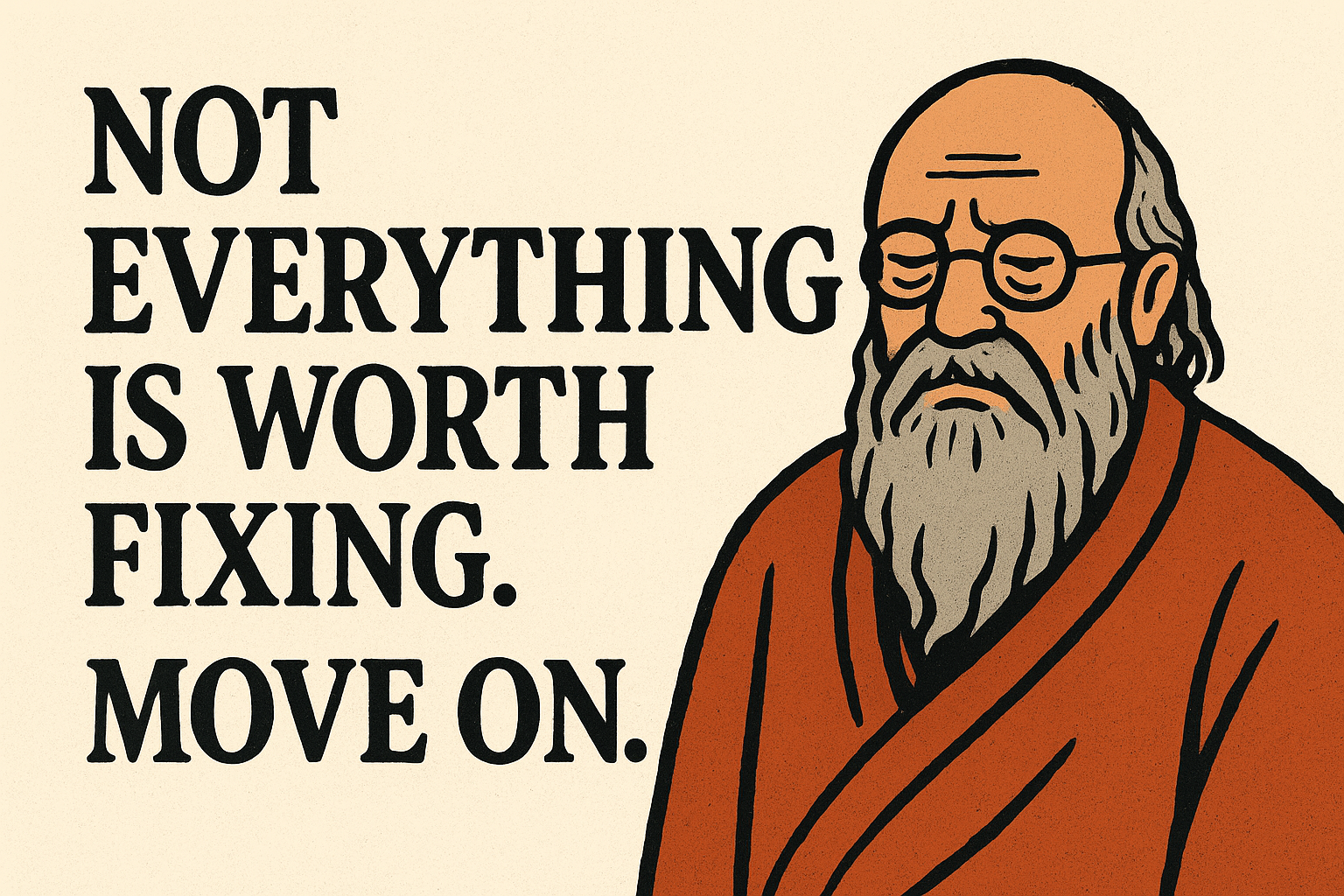
Indians have a strange compulsion. They will fix everything that is broken, except themselves. A cracked teacup is repaired with Fevicol only to dribble over the saucer. A rickety chair is nailed so many times that it becomes a porcupine of iron pins. Even governments are glued together with opportunistic alliances and sold as national stability. It is the same story in homes, in offices, and in Parliament: the obsession with patchwork, the fear of abandonment.
Yet the simple truth stares everyone in the face. Not everything is worth fixing. Some things are meant for the dustbin.
Take marriages. They are the most abused furniture in Indian households. A husband staggers home drunk and smelling of perfume that is not his wife’s, yet the wife puts sindoor every morning and announces to the neighbourhood that she is a “sanskari patni.” The mother-in-law beams with pride at this martyrdom, calling it tradition. But as the Punjabi proverb says, “A dead buffalo does not become alive by sprinkling rosewater.” A rotten marriage does not sweeten by endurance. It only stinks more with time.
Friendships are treated no better. A friend backstabs, borrows money without returning it, and spreads gossip at every tea shop. Still, the wounded party invites him for Diwali dinner because “dosti nibhaani hai.” Such loyalty is not virtue but stupidity. A snake, once bitten, does not shed its fangs. It will strike again when the opportunity arises.
Politics is an even grander circus of repairs. Old leaders who should be preserved in museums continue to switch parties with the agility of monkeys. Policies that failed in the 1970s are recycled, given English acronyms, and paraded as reforms. When corruption is exposed, committees are set up to “fix” the problem. Committees are India’s most reliable repair shops: they promise much, deliver nothing, and keep the wreckage intact. In villages they say, “You cannot wash coal and make it white.” Yet in Delhi, every government attempts exactly that.
Why this mania for fixing? Partly because letting go feels like defeat. A cracked glass reminds people of failure. Throwing it away seems like admitting weakness. So they cling to it, patch it, and hope no one notices the leak. But everyone does. The man who refuses to throw away his useless transistor is not sentimental, he is foolish. His neighbours laugh at him, but he consoles himself by saying, “It carried my father’s songs.” Nostalgia is a poor excuse for idiocy.
There is beauty in abandonment. Look at ruins. The arches of Fatehpur Sikri, eaten by time, command more respect than a freshly painted municipal building. The moss on forgotten temples is poetry in green. Ruins remind that decay has dignity. To plaster over their cracks would be vandalism. Likewise, some wounds in life must be left alone. A betrayal need not be stitched with hollow apologies. A broken friendship need not be resuscitated with birthday messages forwarded from WhatsApp. Scars, when left to themselves, speak more truth than any repair job.
Moving on requires humility. It means admitting that one is not God’s handyman. The universe thrives on destruction. Stars explode to make galaxies. Rivers change course by flooding their banks. Forests flourish only after fires clear the ground. If nature itself builds by breaking, who are human beings to insist that everything must be mended? The crow does not polish its feathers; it flies. The bull does not repair the yoke; it ploughs. Only man wastes his life polishing junk and calling it virtue.
The real courage lies in sweeping aside what is useless. The reader who abandons a boring book after fifty pages is wiser than the one who drags it to the end. The worker who leaves a job that drains him is braver than the one who dies at his desk. The lover who walks away from humiliation is nobler than the one who clings to abuse in the name of loyalty. In the village they say, “Why milk a barren cow? Better to buy a goat.” Life is too short for barren cows.
And yet people hoard. They keep cupboards full of yellowing letters, radios that no longer work, and grudges that no longer matter. Their homes are museums of irrelevance, their hearts graveyards of wasted affections. They polish dust and call it heritage. They mistake inertia for faithfulness. They are wrong.
Even grief, the most honest of emotions, is mismanaged. Death is not a problem to be fixed. But mourners are told to “move on” by filling their lives with chatter, parties, and noise. They should be told instead to sit quietly with their loss, to walk with it until silence becomes a friend. Death cannot be undone, but it can be understood. That understanding does not come from repairs; it comes from acceptance.
The moral is as sharp as a Sikh’s kirpan: stop fixing what is finished. Throw the glass. Burn the letters. Sack the politician. Divorce the scoundrel. Abandon the transistor. Let the ruins stand. Freedom lies not in mending but in discarding.
As the old saying goes, “You cannot straighten a dog’s tail, no matter how long you keep it tied.” Some things are meant to remain crooked. The wise learn to laugh, leave them, and walk on.
Not everything is worth fixing. Move on. Those who learn this truth live lighter, walk faster, and die wiser.
Written by- Gunja Jha
Teacher (gunjatathagat@gmail.com)



.jpeg)





.jpeg)



.jpeg)



.jpeg)
.jpeg)
.jpeg)


Asha Raman foundation
1 month agoAsha Raman Foundation is working tirelessly to uplift rural communities in Bihar through education, healthcare, women empowerment, skill development, and sustainable livelihood programs. Our goal is to bring positive change in villages, reduce poverty, and provide equal opportunities for all. Together, we can build a stronger and self-reliant Bihar. Learn more asharaman.com